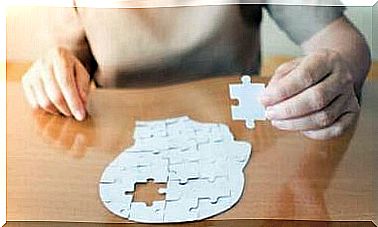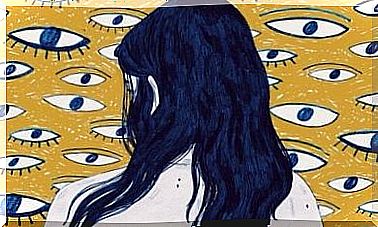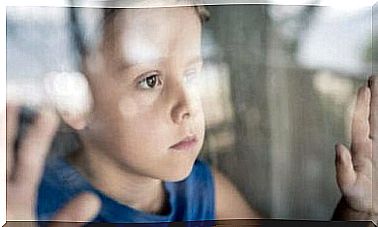Slow Living: An Effective Way To Achieve Happiness

How many times have you been stuck in the heat and stress of modern life? Probably a lot more often than not. Living at the speed of light means that you often miss the many small moments, nuances, sensations and details that make life worth living. Slow living is a concept that can help you on the path to a more harmonious and happy life.
The idea of slow living is based on the Slow Food movement, which first emerged in 1980s Italy. Since then, more and more people have chosen to follow this way of life. So, what is this movement about and what benefits can it bring? Read on to learn more about it.
In today’s world, the word “slow” often has negative connotations and is closely associated with terms such as laziness or incompetence. But it’s time to change all that. Living slowly does not mean living poorly or irresponsibly. This means that you focus your attention on the present and enjoy every moment.
Life moves forward at an incredible pace, without us even realizing it. It is no coincidence that up to 20% of the Swedish population each year suffers from some type of anxiety disease. In addition, the majority of those who suffer from stress later develop emotional disorders such as anxiety or depression. This is because once we realize how bad it has become, it is often too late.

Living life at top speed has its consequences
As we grow up, we learn the importance of being in a hurry and accept it as the norm. As children, we learn to run to make it to school on time and hurry in from the schoolyard so as not to come back too late to class. We rush out to do different activities after school and rush home even faster to start with homework. Life never slows down. A quick shower, an even faster dinner and then to bed. And tomorrow we will do the same thing again.
The same thing happens when we leave the nest and when we get our first jobs. We prepare for a life spent at our desks. We rush to work in the morning and rush out again at the end of the day. Once back home, the next task inevitably awaits us, such as demanding family members, reports to be completed, or household chores we must complete.
The boiling frog
Have you ever heard of the boiling frog? This story can be used to explain why we think it is normal to live such a stressful life.
If you were to put a frog in a pot of boiling water, it would immediately try to jump out and escape. But if you put the frog in lukewarm water and gradually raise the temperature, it will simply let its body temperature adjust so that it matches that of the water. The frog accepts every little gradual change to such an extent that it even notices that it is finally boiled alive.
Even though this sounds incredible, it’s actually something similar happening to us. From a young age, we are surrounded by a world and a society where everything moves at an “unnaturally” fast pace. Just like with the frog, we adapt and as the years go by we accept our way of life and see it as normal, sometimes even desirable. Think of all those who just fade away after retirement has arrived.
It is worrying that many of us even look at being stressed as something positive, that we would be bored without stress. Do you recognize yourself? When we understand how much impact this lifestyle has on our well-being, it is often too late. The damage has already been done.
Slow living and its benefits
The idea of slow living can be applied to almost all aspects of life, from food (ie Slow Food; its origin) to things like exercise, leisure, travel, fashion, education and of course work.
The attitude encourages us to eat natural products while practicing “conscious eating”, to use technology in a rational and practical way, to support small local businesses, to break the unhealthy cycle of waste culture and thus counteract some of the damage it does in other countries.
This way of life promotes a more relaxed approach, so that we can enjoy the little things and give them the attention they deserve. What would you value more? Something quick and easy or something you have put time and effort into?
Sounds easy on paper, right? Therefore, the movement behind slow living provides a number of recommendations on how to start living life at a slower pace. The first rule is: be patient. Life habits can not be changed overnight.

Immerse yourself in a world of slow living
1. The morning routine for slow living
Get up a few minutes earlier in the morning. It’s worth it, trust us! Take a shower and enjoy a good breakfast without feeling distracted from your work or studies. If you can, go for a walk and pay attention to the world around you. If not, try to put away your mobile phone while traveling by public transport.
2. Live on smaller funds
Reject consumerism and buy only what you need. If you stop for a moment and look around, you will soon realize that you need less, not more. Try to apply the seven-day rule. This means that when you decide you need something, you have to wait a week before you buy it. If you still need the item at the end of the seven days, you can afford to buy it. This approach also gives you the opportunity to weigh against other options as well as compare with the prices offered elsewhere.
Live well and enjoy the present
Our lives are often haunted by a past that we cannot change and the fear of a future that may not be as we imagine. All we have is the present, so we must do everything we can to hold on to it. This way of life encourages us to contemplate, philosophize and practice other disciplines that encourage us to reconnect with our bodies and our senses and to live in a here and now.
4. Try to do a good deed every day
Contrary to many people’s beliefs, this can actually have more benefits for you than for the person you are helping. Eventually, you start breaking with the autopilot.
5. Be part of a group or community
This can mean everything, from volunteer work and team sports to travel. Humans are social beings and, as the Polish social psychologist Henri Tajfel said, belonging to certain groups helps to shape our social identity. In addition, our self-perception is conditioned by the emotional significance and the value we place on being part of a group.
6. Write a gratitude diary
Spend some time each day writing down three positive things that have happened to you. These can be actions, thoughts, feelings or events. At first, you may be surprised that you have to struggle to come up with three examples. But eventually you will learn to appreciate even the small things and to create these positive moments for yourself.
Even if it seems trivial, write it down. Many of our thoughts often end up drowning in things that we consider more important. Writing them down is a great way to not forget them. You can also go back and read through these lists later, perhaps on days when you feel down and need some mental refreshment. This technique works well for patients suffering from symptoms of an underlying depression and can be a great way to change your attitude. Give it a try!
7. Switch off
This is probably the hardest part of slow living. Put your mobile phone on silent, go out without it or turn it off completely if you can. You can not imagine how good it feels to stop being a slave during technology, even if only for a few hours.
How can I practice slow living when I live in an urban environment?
As you can see, these guidelines are pretty easy to follow, wherever you are. But it does not always end there. As incredible as it may seem, there are actually slow-moving towns and smaller towns (Cittaslow) all over the world.
These are places where people can enjoy going out and walking and having casual conversations with friends. In Sweden, there is actually also a Cittaslow urban area. It is Falköping in Västra Götaland that has managed to unwind to such an extent that it has been enriched with this prestigious title.

How did the slow living movement come about?
The movement originates from Italy in 1986. It was started by Carlo Petrini, who came up with the idea after he was shocked to find a McDonald’s restaurant in Piazza de Spagna in Rome.
He led the movement in an effort to combat the emergence of fast food and created the philosophy of prioritizing slowly prepared and enjoyed food to protect local culinary traditions, products and gastronomic entertainment in general. The rest of the movement grew around this idea of Slow Food until it became an all-encompassing philosophy of life.
Personal reflections
I have been lucky enough to visit some of the major cities in Southeast Asia. One of the first things that caught my attention was their relaxed attitude to life. Almost everywhere you see someone taking a nap in broad daylight. And it can be a nap on a motorcycle, on a public staircase, in a park or even on a cow.
Life and movement begin early in the day. Most people live humbly and are always willing to give a friendly smile or a helping hand. In addition, especially in predominantly Buddhist regions, it is common to practice meditation. They are real experts in living slowly.









